The First Zero Net Energy Campus Science Lab in the Northeast
Last December, I toured the John J. Sbrega Health & Science Building on BCC’s Fall River campus with its architect, Jim Moses from Sasaki Associates. Over the past two years, he’s been making weekly trips to check in on the building — I’d been following its progress on Instagram and wanted to see it for myself.
I also wanted the skinny on this remarkable building which has been garnering national awards for its environmental approach. The goal: to design and construct a zero net energy (ZNE) building, or one that generates as much energy as it uses.
Anyone who has seen the solar array adorning the new parking lot at BCC knows that BCC is serious about renewable energy. President Jack Sbrega was a founding signatory to the American College and University Presidents’ Climate Change Commitment and BCC’s climate action plan sets a goal of carbon neutrality by 2050. When it came time to design its new health and sciences building, environmental concerns were necessarily part of the planning process.
Moses told me a little about ZNE buildings. Of the 40 or so ZNE buildings in the U.S., more than half are on the West Coast where the climate is milder. In addition to dealing with a harsher New England climate, BCC had to contend with the enhanced energy needs of a science building. Moses says a ZNE academic lab-science building “is without precedent in the Northeast.”
He told me about the hybrid source heat pump, enthalpy wheel heat recovery and the filtration fume hoods, all of which help create a ZNE building which will provide operational savings of $230,000 per year. He’s passionate about all of this (see more here).
Yes, yes, yes. The technology that reduces carbon footprints is terribly important. We all can agree that a Zero Net Energy building is something to celebrate. But here’s why I really went to see the building. What does it look like?
And here’s the really big news: it’s a beautiful design.
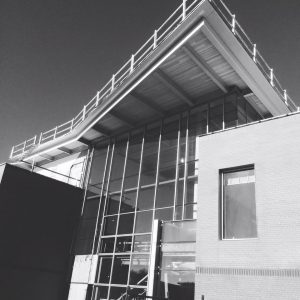
From the outside, glass, steel, and wood combine to create a building that moves the campus beautifully into the 21st century. The asymmetrical roof lines overhanging the building, the textured brick patterns, and the long colonnade create an elegant building with character that immediately engages your interest. You’ll want to walk all around the building. You’ll want to enter.
Inside, a soaring center atrium unifies the entire building. Staircases on either end appear to be floating. Glass walls create a window into the lab classrooms which reveal the science happening inside. The glass walls also bring a heavy coolness factor as new-fangled blackboards: they double as writing surfaces.
Moses pointed out areas where chairs and couches will entice students to study and lounge between classes. His hope is that students who would never think to take a science class will come to the building simply to hang out. They’ll see what’s happening in the labs and consider taking a class. “We always talk about science on display,” he says. “The idea is to remove the mystery behind science. If you can see it happening, you’ll be curious and think, ‘maybe I should take a class.’ It’s about inviting people into that world.”
“We always talk about science on display,” he says. “The idea is to remove the mystery behind science. If you can see it happening, you’ll be curious and think, ‘maybe I should take a class.’ It’s about inviting people into that world.”
Moses was very mindful of designing this building for the future yet he relished the opportunity to root it firmly in the South Coast’s history. The wood shingles and patterned floor tiles are nods to the history of the Fall River and New Bedford mills and textiles. He showed me some of the photos he used as inspiration to reflect this rich history:
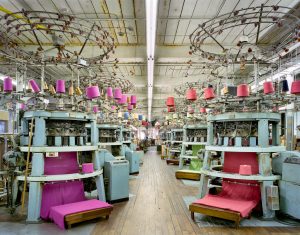
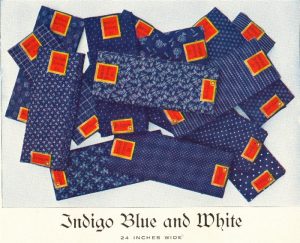
Perhaps an even bigger nod to the past is the oak tree outside the North end of the building. When I visited in December, I saw it protectively surrounded by a chain link fence next to the construction zone and asked about it. The answer was simple. “We wanted to save it,” Moses said.
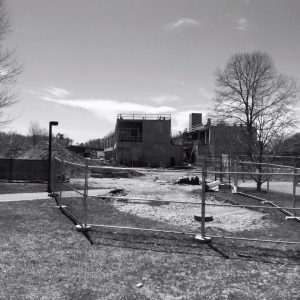
There’s something incredibly lovely about their efforts to save that tree. It seems particularly apt for the Sbrega Building — reflecting both its healthy respect for the past and its forward-thinking focus on conserving the environment.
Want to keep up with South Coast Almanac? Sign up for our monthly email newsletter here.

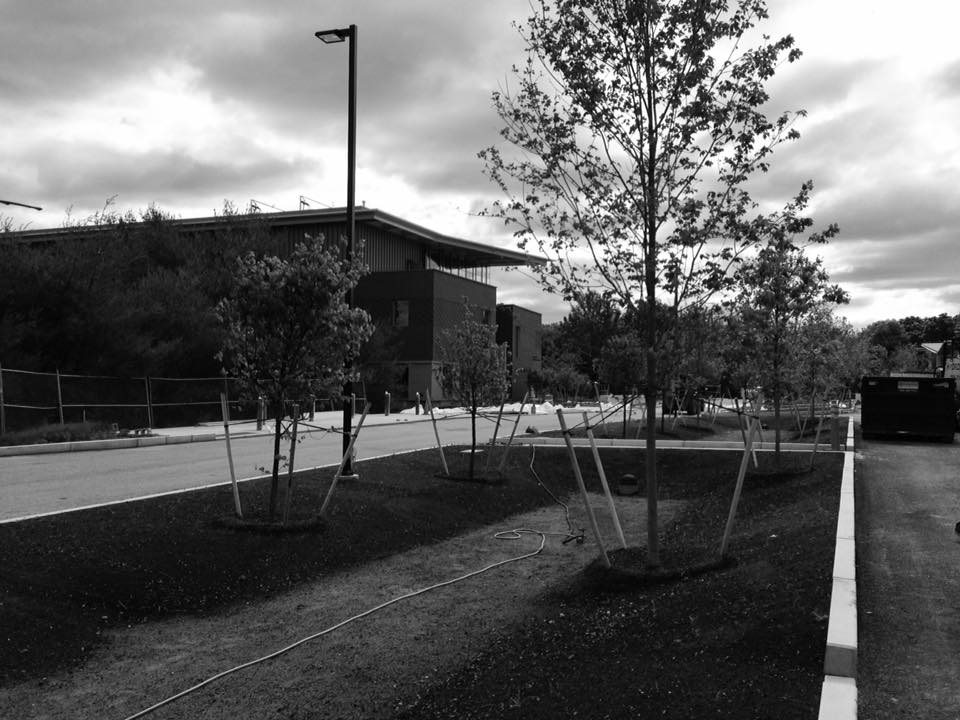
Zero net energy (ZNE) buildings are awesome! I get the chance to be a part of the green movement by working at a window manf that heavily focuses on Passive House + ZNE construction. The industry is growing up and our energy standards are getting so much better day by day, I love it!
Cheers, Brian
Marketer @ Alpen High Performance Products https://thinkalpen.com
Founder @ Materials Museum https:/materials.museum
Founder @ Materials Magazine https://materialsmagazine.com